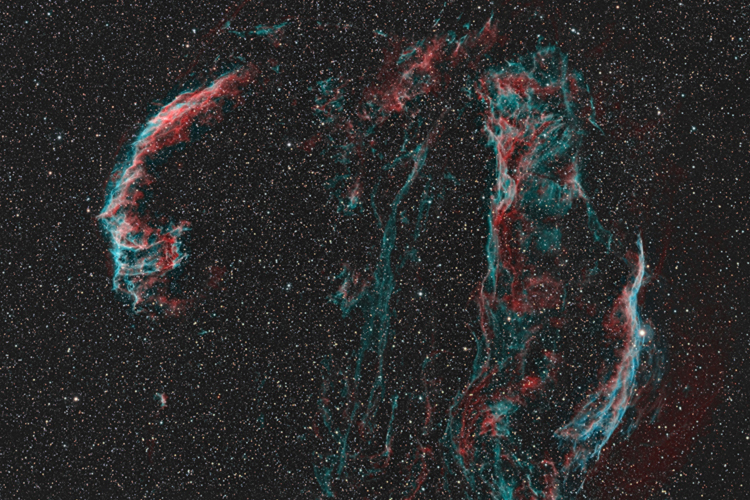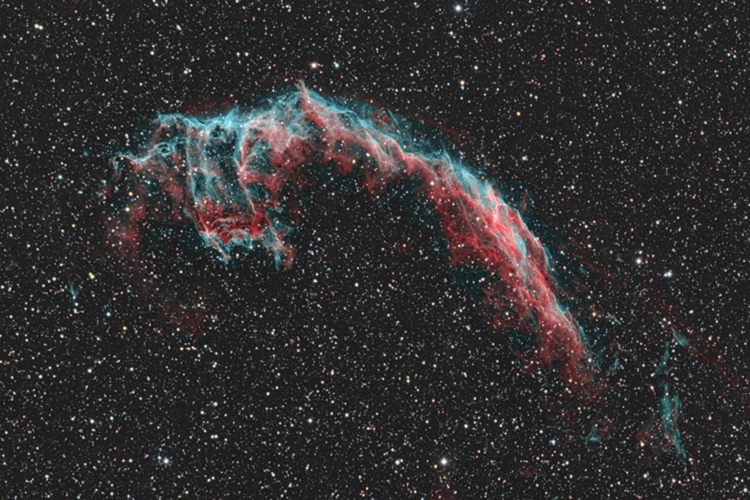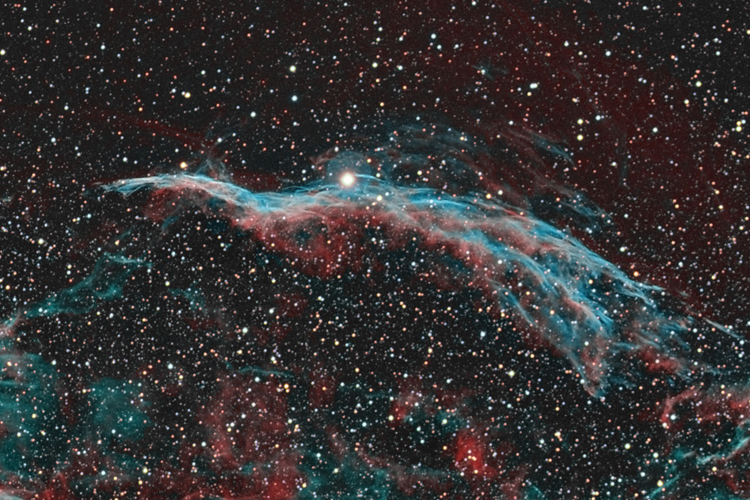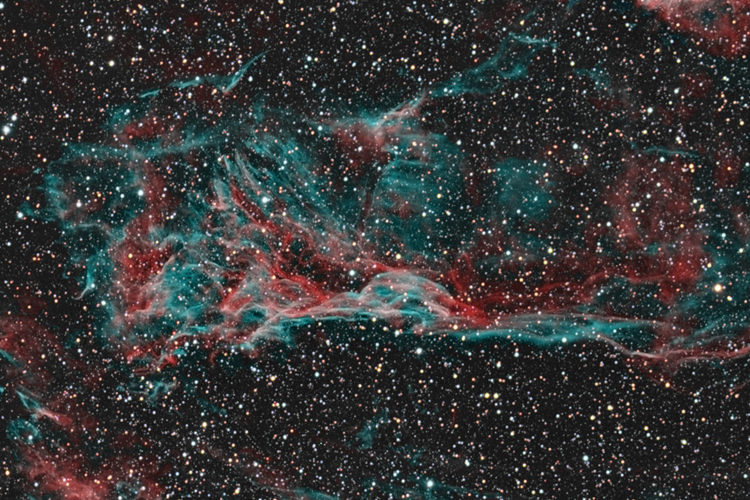|
North is to the top in
the first image.
Although this image
was taken with narrow band filters it is a fairly good
presentation of what the nebula looks like if red, green and blue
filters were used. This is possible because the band width of the OIII filter is about half way between green and blue. This technique
works especially well with this nebula because the RGB colors are
mostly red and cyan. I used this method because, with true RGB, the
stars completely overwhelm the nebula.
These wisps of gas are all that remain visible of a Milky Way star.
Many thousands of years ago that star exploded in a supernova
leaving the Veil Nebula. At the time, the expanding cloud was
likely as bright as a crescent Moon toward the constellation of
Cygnus, visible for weeks to people living at the dawn of recorded
history. The remaining supernova remnant lies about 1400 light-years
away and covers over five times the size of the full Moon. The
bright wisp on the right is known as the Witch's Broom Nebula and
can be seen with a small telescope. The Veil Nebula is also known as
the Cygnus Loop.
Source: NASA
APOD |




